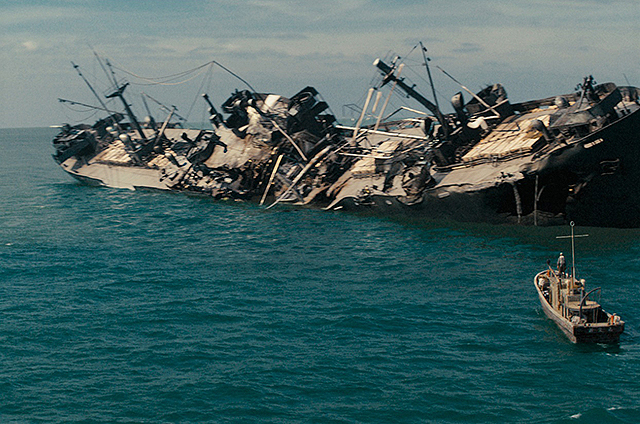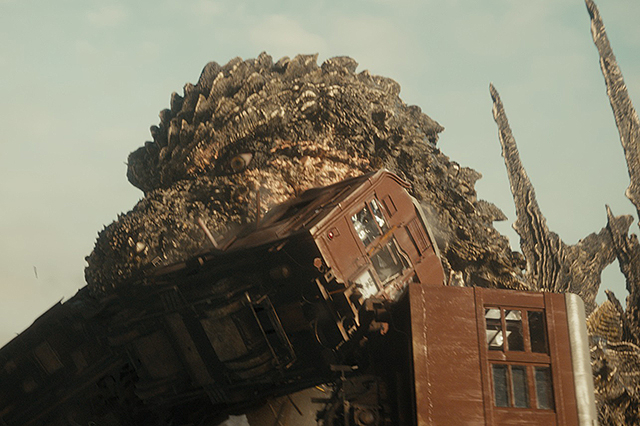
@Courtesy of Toho Co., LTD.
A month after I saw the film, “Godzilla Minus One” at the Japan Society, I really wanted to see how this film did at the U.S box office, which is more than most people have anticipated. So, I decided to take some time to write about this remarkable film which was special to me, so I wrote something that is very much Japanese’s perspective but I’m proud to have that…
Almost 70 years prior to the recently released “Godzilla Minus One,” director Ishirō Honda, a long time friend of Akira Kurosawa, revolutionized what is called Tokusatsu (a Japanese term for live-action films or television programs that make heavy use of special effects). Eiji Tsuburaya (special effects director and a co-creator of the Godzilla and Ultraman franchises) and Honda became the driving forces of Tokusatsu which was implemented in 1954’s “Godzilla” — the original film which spurred on the genre of Japanese monster movies.
Inspired by the American film “King Kong,” Tsuburaya formulated many of the techniques that would become staples of the genre, such as so-called suit-mation — the use of a human actor in a costume to play a giant monster which was combined with the use of miniatures and scaled-down city sets. Not only had the two developed an unprecedented approach to make the original “Godzilla,” but they were also addressing the core theme of the film, and what Godzilla intended to represent the coming nuclear agenda: the threat of atomic bomb proliferation.
Director Honda had served in the Sino-Japanese War. It ended in China, where he was a prisoner of war for six months. During that time, all of Honda’s siblings had passed away. Then, in 1945, while returning home by train from China, Honda saw Hiroshima destroyed by an atomic bomb and was deeply shocked and haunted by this memory. Now, in the latest film, “Godzilla Minus One” it syncs in perfect unison with the original idea and resonates with an emotional after effect of what Honda had originally intended — to represent Godzilla as a nuclear bomb. The two bombings of Hiroshima and Nagasaki killed between 129,000 and 226,000 people, most of whom were civilians, and remain the only use of nuclear weapons in human history.

@Courtesy of Toho Co., LTD.
For months afterward, many people died from the after effects of burns, radiation sickness, and injuries, compounded by illness and malnutrition. It took years to grow any vegetable in the radiation-infused soil. Apartments and stores were eventually built from the ground-up. After World War II, many people lost family members, and barely scraped by on a daily basis. In those days, Japanese people not only lost their homes or family, but also their beliefs. During the Meiji period, Shinto had been made Japan’s state religion. Shinto priests became state officials, important shrines received governmental funding and Japan’s creation myths were used to foster a national identity with the emperor at its center.
The Japanese concept of the divinity of the Emperor is often misunderstood by Westerners. During the ‘30s, there were some who taught that the Emperor was akitsu mikami (“manifest god”). The Emperor’s kami nature, coupled with his direct descent from Ameratsu (the highest kami), made him so superior that the Japanese thought it entirely logical that people should unquestioningly obey the Emperor and worship him.
With all that in mind, the film starts off with its Kamikaze pilot protagonist, Kōichi Shikishima (Ryunosuke Kamiki), finding excuses not to sacrifice his own life for what is now seen as a lost cause. Doubting his belief in Shintoism, he engaged in the action by landing his plane on an island service base, figuring that his complaint of machine faults was a way to avoid responsibility and his death.

@Courtesy of Toho Co., LTD.
Not only did he abort his suicide mission by landing his plane on Oda Island, but Shikishima froze when he was first confronted by an emerging monster — what the locals called Godzilla. In his hesitation, he fails to shoot at the creature for fear of drawing deadly attention and indirectly costs the life of almost the entire ground crew of the island’s airbase. Kōichi is trapped in the moment through his cowardice, unable to move on with his life because “my war isn’t over yet.”
Carrying the guilt of surviving, imagine if you couldn’t sacrifice your life to the Japanese government or the Emperor, and you had to carry that guilt for the rest of life. It’s not just Shikishima, that recurring guilt trip was faced by most of the surviving Japanese soldiers in those days.
Shikishima returns to a Tokyo burned and smashed by air raids and finds out that his parents are deceased and his home is a pile of matchsticks. He then builds a makeshift family with a young woman, Noriko (Minami Hamabe) who also lost everything, and baby Akiko (adorably played by Sae Nagatani who later appears as a three-year-old). Noriko ends up looking after the child when she sees Akiko’s mother die in a bomb shelter.
Even though Kōichi doesn’t feel worthy of love while being with Noriko, he steps up to the responsibilities. He provides for her and the infant by taking a risky but well-paying job manning the gun on a wooden mine-clearing boat working in the coastal waters outside Tokyo.
Before long, Kōichi again comes face to face with the slavering jaws of his mega-lizard nemesis. But now Godzilla, having been bathed by radiation from the first Bikini Atoll nuclear test in 1946, Godzilla emanates a devastating heat ray which mimics the heat wave of a nuclear weapon. The post-war Japanese government, which then had no military force, and GHQ, the occupying force, are too concerned with the Soviets, so, the streets of Ginza are left to be completely eradicated.

@Courtesy of Toho Co., LTD.
With his failed suicide mission and the entire army unit frozen in front of the big creature, he realizes that he was destined to face the monster. Shikishima joins forces with other former soldiers who also had been living in a corner of Tokyo, and with their limited equipment and supplies, they devise a strategy to destroy Godzilla in order to prevent its next attempt to land on Japan.
The latest Godzilla film is a culmination of the “family story” theme that director Takashi Yamazaki has been working on throughout his career. With the help of distribution company Toho’s staff, director Takashi Yamazaki rewrote the script more than 30 times. Their intention is obvious — to attract a world wide audience with “content and story” slimmed down to what was essential.
In the aftermath of World War II, people built barracks out of scrap wood in burned-out fields and really struggled to survive. Japanese people really started from below zero… minus one. When the evacuation siren sounds for Godzilla sounding exactly like the same haunting sounds that remind the Japanese of when the B29 bombers hovered over their head, they didn’t know what the massive destruction force was about to drop on them— just like them not knowing where Godzilla would next attack. That was a hard-hitting reality that the film, “Oppenheimer,” didn’t depict. Its director Christopher Nolan, didn’t intend to show the victims or evoke emotions about this bombing which was the U.S’s fault, by not using any CGI for the nuclear bomb test or images of the Japanese victims out of respect for Japanese people and the casualties.
In the end, the Japanese spirit is a strong force in this film. This movie not only captures the heart of Japan, but has prompted a great momentum at the U.S box office; it has gained a 98% rating at Rotten Tomatoes, which is higher than “Oppenheimer,”(93%), “Killers of the Flower Moon” (93%), ”The Holdovers”(93%) and “Poor Things” (93%). That’s a remarkable achievement. In this film, the land of rising sun finally comes this far in being able to shake off the image of “King Kong.”
 @Courtesy of Toho Co., LTD.
@Courtesy of Toho Co., LTD.
Grade : A
Check out more of Nobuhiro’s articles.
Here’s the trailer of the film.

